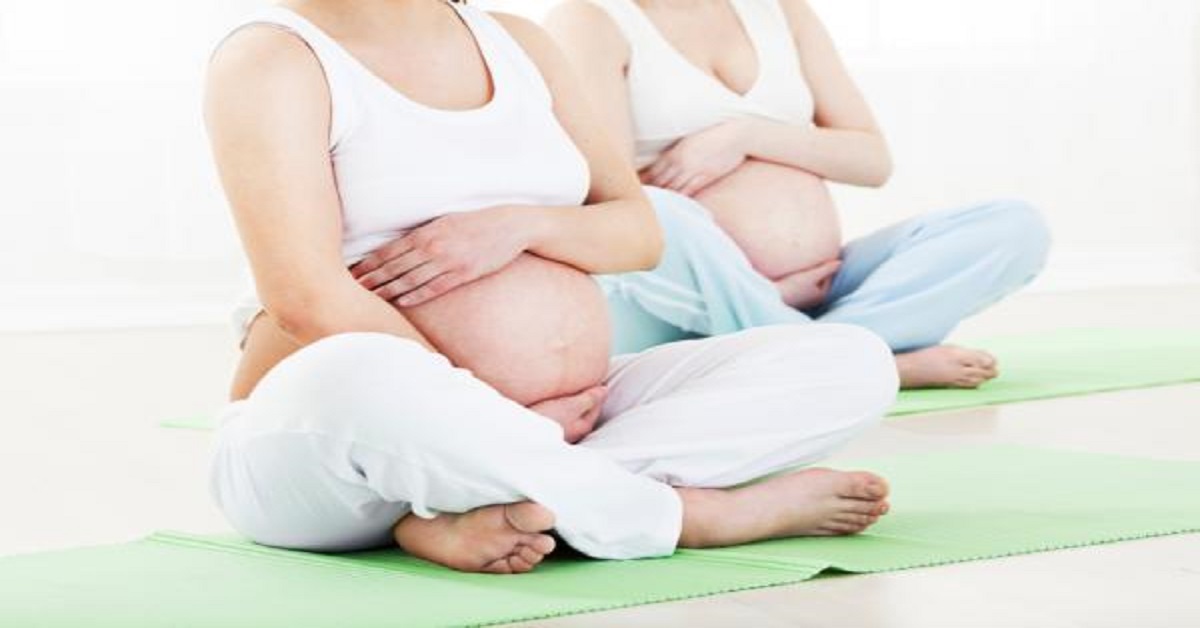
So, after the first exercise of Agnistambhasana or the Fire Log pose, let’s move onto the next yoga pose.
For Back Pain and Tight Hips: Pigeon Pose
Eka Pada Kapotasana or the one-legged king pigeon pose
Like the previous pose, this hip-opener is perfect for relieving lower back tension.
One-Legged King Pigeon Pose Instructions

Start on all fours. Slide right leg forward so right knee comes to right wrist, and right flexed foot is directed toward left wrist. Ease left leg down to the ground and extend it behind you, keeping left foot relaxed and leg internally rotated. (Make sure left leg is directly behind you, not angled out to the left). If it feels comfortable, come down onto forearms, connect hands in prayer, and bow forehead to touch thumbs. (If your belly does not allow you to bend forward, remain comfortably upright, being careful not to put excess pressure on the low back.) Repeat on the other side.
READ ALSO: Prenatal yoga poses for expecting mothers
Pose Information
Sanskrit Name
Eka Pada Rajakapotasana
Pose Level: 1
Contraindications and Cautions
Sacroiliac injury
Ankle injury
Knee injury
Tight hips or thighs
Modifications and Props
It’s often difficult to descend the outside of the front-leg hip all the way to the floor. Place a thickly folded blanket underneath the hip for support.
Theraputic Applications
Urinary disorders
Preparatory Poses
Baddha Konasana
Bhujangasana
Gomukhasana
Setu Bandha
Supta Virasana
Supta Baddha Konasana
Utthita Parsvakonasana
Utthita Trikonasana
Virasana
Vrksasana
Follow-up Poses
Eka Pada Rajakapotasana is actually the first in a series of four, increasingly difficult Pigeon poses. In each of the three successive poses, the forward leg is placed in a slightly different position. In the second variation the forward foot is standing on the floor just in front of the same-side buttock, with the knee angled well forward of the heel. In the third variation the forward leg is in Ardha Virasana, while in the fourth the leg is stretched straight forward (as in Hanumanasana or Monkey Pose) of the pelvis.
Benefits
Stretches the thighs, groins and psoas, abdomen, chest and shoulders, and neck
Stimulates the abdominal organs
Opens the shoulders and chest

Post Your Comments